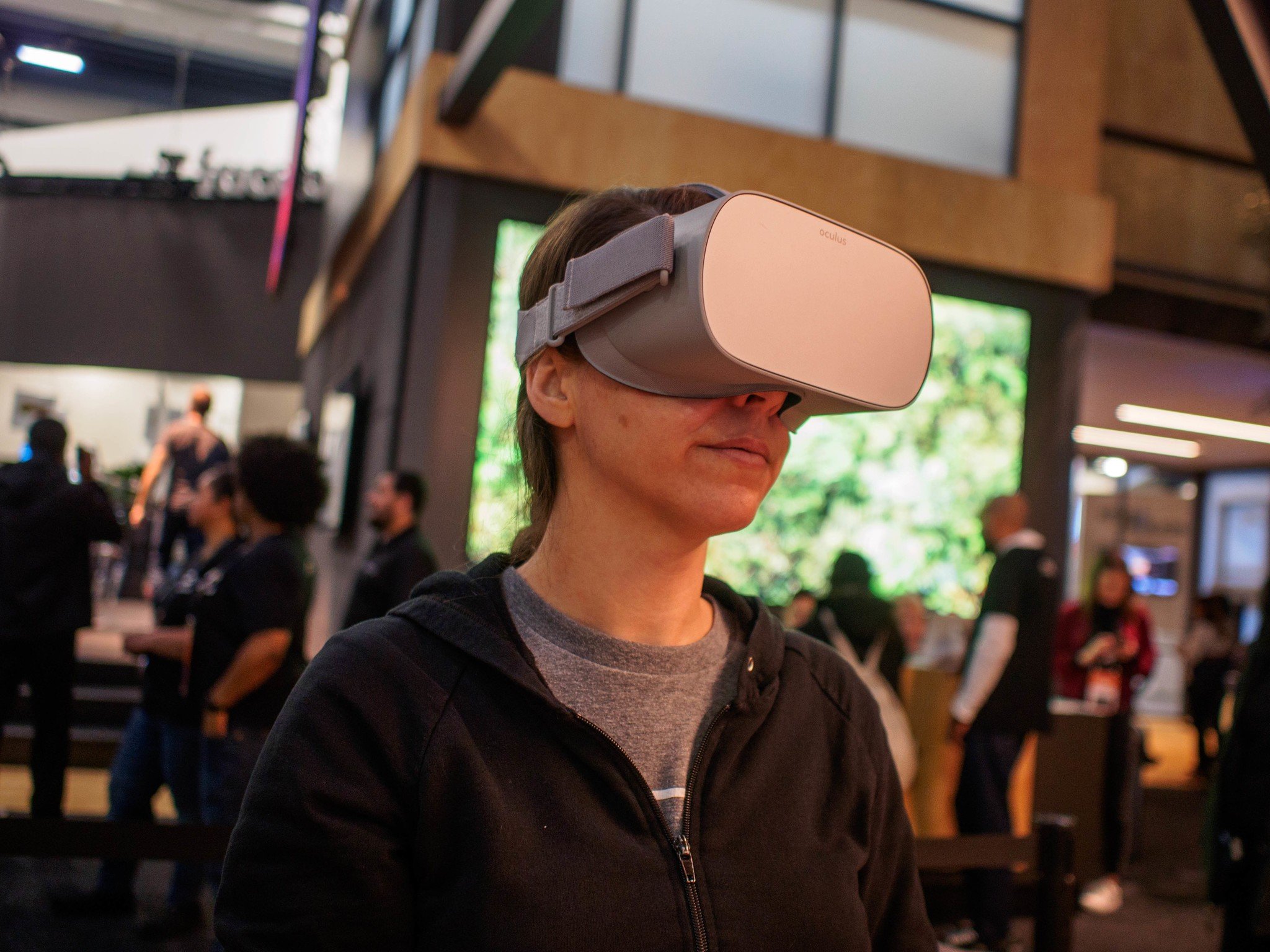 The first VR headset everyone can, and will, enjoy.
The first VR headset everyone can, and will, enjoy.
 Where most other VR headsets feel like experiments pushed into the world for users and developers to figure out what is cool and fun, Oculus Go is different. This headset has been built to offer a polished experience from the moment you open the box to the moment you excitedly hand the headset to someone else to share what you saw. It's the evolution of the Samsung Gear VR headset, replacing the need to insert a phone into the front slot with its own standalone processor and display. It's portable, capable, and by far the easiest to use VR system released to date.
Best of all? It's yours for $200. No external hardware required, and no cable hanging off the back of your head. This is the VR headset you take with you on an airplane, or for your kids to enjoy with your supervision. It's a full entertainment system, from game console with hundreds of titles to immersive high definition television, you can bring with you anywhere.
Got questions? We've answered them all right here.
May 1, 2018 Update: Everywhere you can purchase an Oculus Go!
Last night the Oculus Go pre-order page on Amazon was created. There were no confirmed cases of people actually being able to pre-order the headset overnight. Furthermore, the release date mentioned on the page was originally a staggering "December of 2018." Don't get discouraged, however. Whenever a new page is created on Amazon but hasn't gone live yet the date will always read "December of 2018." This is something I can understand gets confusing quickly.
Onto the real deal, what happened during the Keynote of F8? First, devs were greeted at the door this morning with a sign stating there would be updates for Oculus Go during the conference. Then, finally. The most anticipated news of the VR community has been released. Oculus Go will be shipping today. Getting an official date instead of "sometime before summer of 2018". Get ready, VR nerds, it's time to take VR to a mobile headset. Tell us in the comment section below what you plan on doing as soon as you get your headset! Keep an eye out on Amazon for the buying option to go live!
After checking out the available ways of buying the headset it turns out there are two different memory options! You can get the 32GB headset for $199 and the 64GB headset for $249.
See on Amazon
The real question you need to ask yourself, do I want 32GB or 64GB of storage in my Oculus Go?
Lori Gil, who is newer to the VR community, got to try out the Oculus Go during GDC 2018. Check out what she has to say about it here.
"Oculus Go, in my opinion, is positioned to be the first true consumer-focused VR system to bring new people into the fold. No, it's not a top-quality device with all the bells and whistles, but it is completely self-contained so the initial investment is minimal. For $200, you can get started with VR. You don't need a special phone, you don't even need a phone at all! You don't need a special computer or graphics card or game console. It's the perfect starter VR device. Once new users get into VR through Oculus Go, they can then decide whether to move on to something more powerful if they're ready to go all-in, or stick with the entry-level device if they discover they're not heavy VR players. I can't wait to get one."
Where most other VR headsets feel like experiments pushed into the world for users and developers to figure out what is cool and fun, Oculus Go is different. This headset has been built to offer a polished experience from the moment you open the box to the moment you excitedly hand the headset to someone else to share what you saw. It's the evolution of the Samsung Gear VR headset, replacing the need to insert a phone into the front slot with its own standalone processor and display. It's portable, capable, and by far the easiest to use VR system released to date.
Best of all? It's yours for $200. No external hardware required, and no cable hanging off the back of your head. This is the VR headset you take with you on an airplane, or for your kids to enjoy with your supervision. It's a full entertainment system, from game console with hundreds of titles to immersive high definition television, you can bring with you anywhere.
Got questions? We've answered them all right here.
May 1, 2018 Update: Everywhere you can purchase an Oculus Go!
Last night the Oculus Go pre-order page on Amazon was created. There were no confirmed cases of people actually being able to pre-order the headset overnight. Furthermore, the release date mentioned on the page was originally a staggering "December of 2018." Don't get discouraged, however. Whenever a new page is created on Amazon but hasn't gone live yet the date will always read "December of 2018." This is something I can understand gets confusing quickly.
Onto the real deal, what happened during the Keynote of F8? First, devs were greeted at the door this morning with a sign stating there would be updates for Oculus Go during the conference. Then, finally. The most anticipated news of the VR community has been released. Oculus Go will be shipping today. Getting an official date instead of "sometime before summer of 2018". Get ready, VR nerds, it's time to take VR to a mobile headset. Tell us in the comment section below what you plan on doing as soon as you get your headset! Keep an eye out on Amazon for the buying option to go live!
After checking out the available ways of buying the headset it turns out there are two different memory options! You can get the 32GB headset for $199 and the 64GB headset for $249.
See on Amazon
The real question you need to ask yourself, do I want 32GB or 64GB of storage in my Oculus Go?
Lori Gil, who is newer to the VR community, got to try out the Oculus Go during GDC 2018. Check out what she has to say about it here.
"Oculus Go, in my opinion, is positioned to be the first true consumer-focused VR system to bring new people into the fold. No, it's not a top-quality device with all the bells and whistles, but it is completely self-contained so the initial investment is minimal. For $200, you can get started with VR. You don't need a special phone, you don't even need a phone at all! You don't need a special computer or graphics card or game console. It's the perfect starter VR device. Once new users get into VR through Oculus Go, they can then decide whether to move on to something more powerful if they're ready to go all-in, or stick with the entry-level device if they discover they're not heavy VR players. I can't wait to get one."
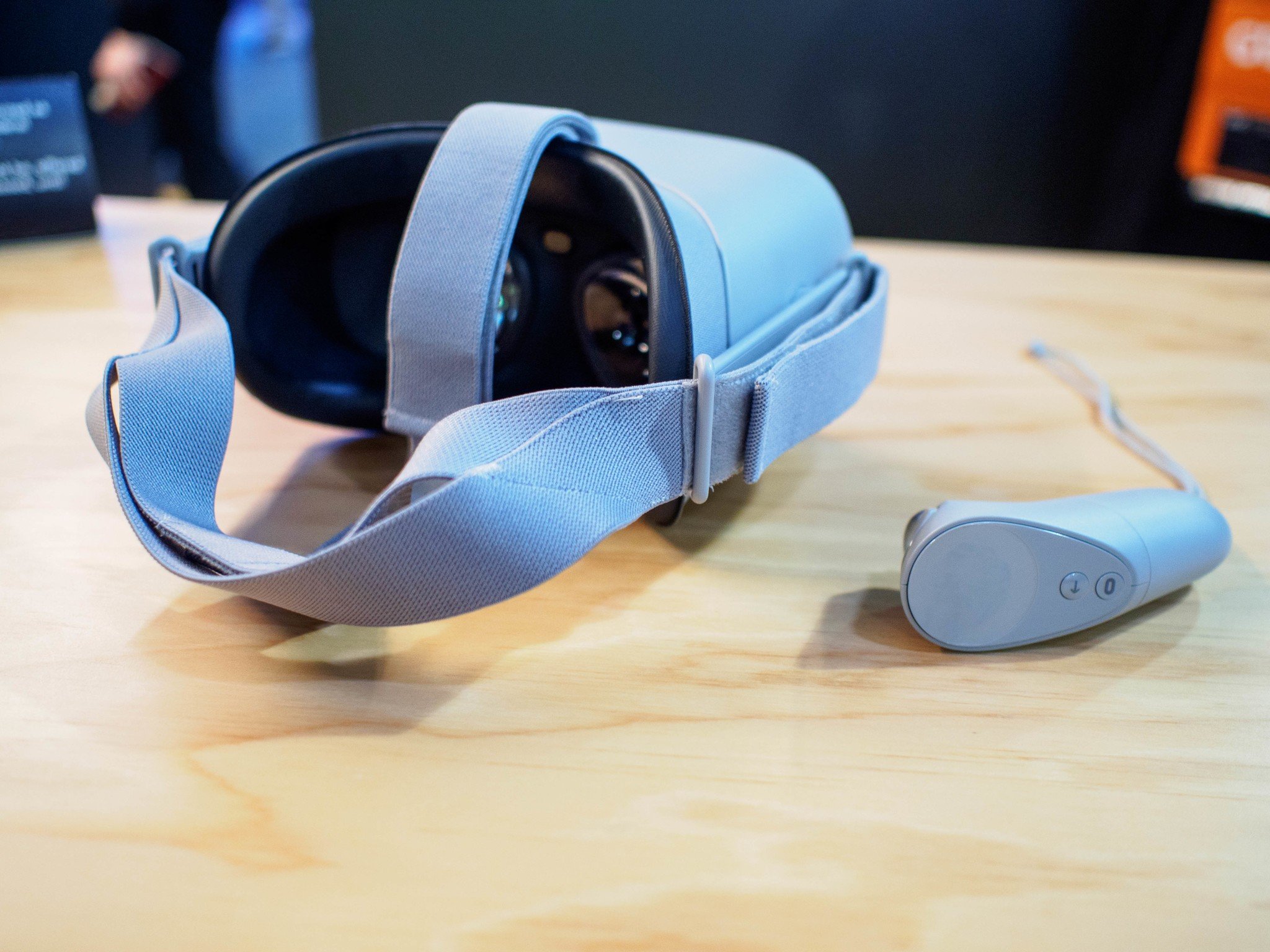 Even when it comes to comfort Lori mentions "- just a little top-heavy (by comparison with the Rift, the Go has a bit of extra weight). I could feel some pressure on my cheeks, but the headset was definitely designed to counter the extra battery weight."
Oculus truly put a lot of thought and planning into making a VR device that can be enjoyed by all. So, even if you're a new VR player, this is still the device for you.
See on Amazon
What is Oculus Go?
Even when it comes to comfort Lori mentions "- just a little top-heavy (by comparison with the Rift, the Go has a bit of extra weight). I could feel some pressure on my cheeks, but the headset was definitely designed to counter the extra battery weight."
Oculus truly put a lot of thought and planning into making a VR device that can be enjoyed by all. So, even if you're a new VR player, this is still the device for you.
See on Amazon
What is Oculus Go?
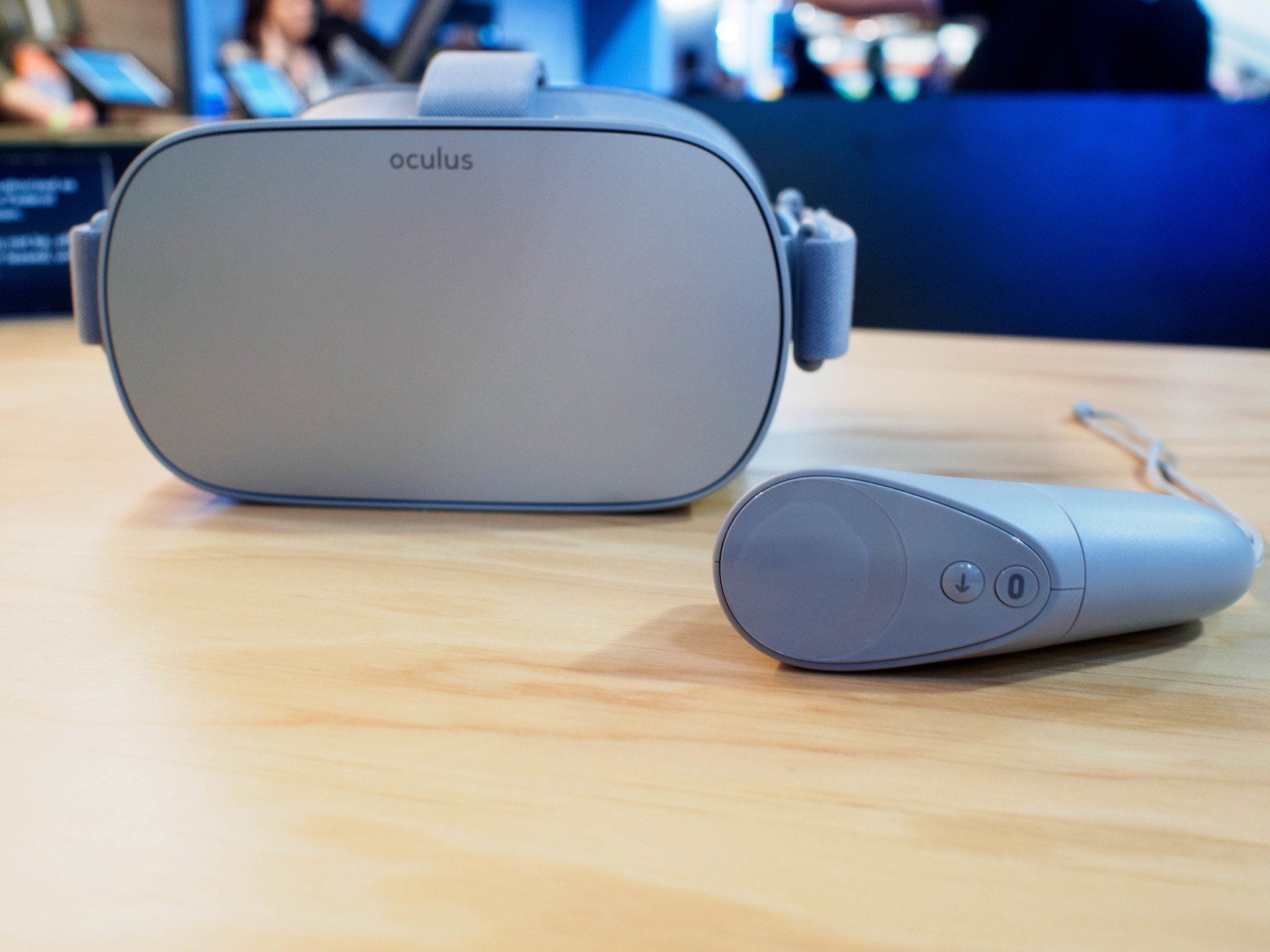 Oculus Go is the third headset from Oculus, and it's meant to sit between the Samsung Gear VR and Oculus Rift. A cordless headset, you'll no longer have to strap in with your PC or have enough juice on your phone in order to play in VR.
It is built to be lightweight, has a new mesh foam interface, and it supposedly has the best visual clarity so far seen in VR, thanks to new lenses and a WQHD LCD fast-switch display with a higher fill-factor than OLED. We learned at CES 2018 that Oculus Go is manufactured by Xiaomi, and it runs a Snapdragon 821 processor which is more than capable of playing the awesome games that are going to be available.
Oculus says this headset lives somewhere in between the Gear VR and Oculus Rift, but it leans much closer to the Gear VR experience than you might expect from that description. This is a standalone headset, meaning the computer is inside the headset with the display, but it's still an Android-powered headset. The good news is this means it will run many of the apps currently available for the Gear VR. That means the headset will not let you walk around and do much. Functionally, this will be very similar to the Gear VR.
Whats the difference between Oculus Go and Daydream Standalone?
Oculus Go is the third headset from Oculus, and it's meant to sit between the Samsung Gear VR and Oculus Rift. A cordless headset, you'll no longer have to strap in with your PC or have enough juice on your phone in order to play in VR.
It is built to be lightweight, has a new mesh foam interface, and it supposedly has the best visual clarity so far seen in VR, thanks to new lenses and a WQHD LCD fast-switch display with a higher fill-factor than OLED. We learned at CES 2018 that Oculus Go is manufactured by Xiaomi, and it runs a Snapdragon 821 processor which is more than capable of playing the awesome games that are going to be available.
Oculus says this headset lives somewhere in between the Gear VR and Oculus Rift, but it leans much closer to the Gear VR experience than you might expect from that description. This is a standalone headset, meaning the computer is inside the headset with the display, but it's still an Android-powered headset. The good news is this means it will run many of the apps currently available for the Gear VR. That means the headset will not let you walk around and do much. Functionally, this will be very similar to the Gear VR.
Whats the difference between Oculus Go and Daydream Standalone?
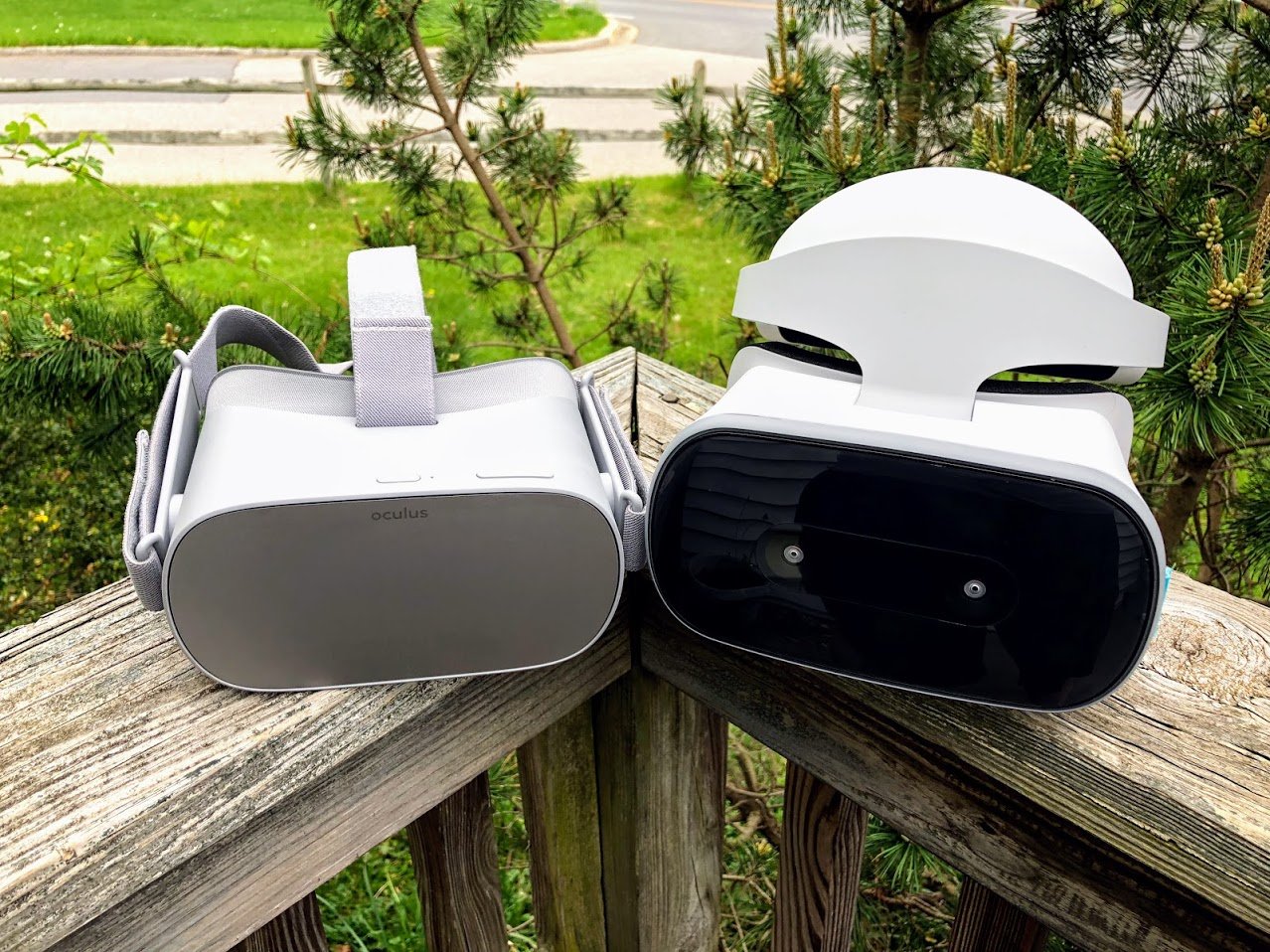 Oculus Go is not the only VR headset to come out this year with its own computer baked in and no messy cables. Google's Daydream Standalone project exists to take the phone-based VR experience it calls Daydream and extend it into its own headset system. Like Oculus Go, no phone is required. Unlike Oculus Go, it's $400.
The reason for this increase in price is the availability of features you won't find on Oculus Go, like a more advanced head tracking system and a rigid plastic design that can take a couple of bumps. Choosing between these two headsets has more to do with the ecosystem you want to live in, whether you'd rather have Facebook and Oculus controlling the store selling you apps, or Google.
Check out more on Oculus Go vs Lenovo Mirage Solo
What can I do in Oculus Go?
Oculus Go is not the only VR headset to come out this year with its own computer baked in and no messy cables. Google's Daydream Standalone project exists to take the phone-based VR experience it calls Daydream and extend it into its own headset system. Like Oculus Go, no phone is required. Unlike Oculus Go, it's $400.
The reason for this increase in price is the availability of features you won't find on Oculus Go, like a more advanced head tracking system and a rigid plastic design that can take a couple of bumps. Choosing between these two headsets has more to do with the ecosystem you want to live in, whether you'd rather have Facebook and Oculus controlling the store selling you apps, or Google.
Check out more on Oculus Go vs Lenovo Mirage Solo
What can I do in Oculus Go?
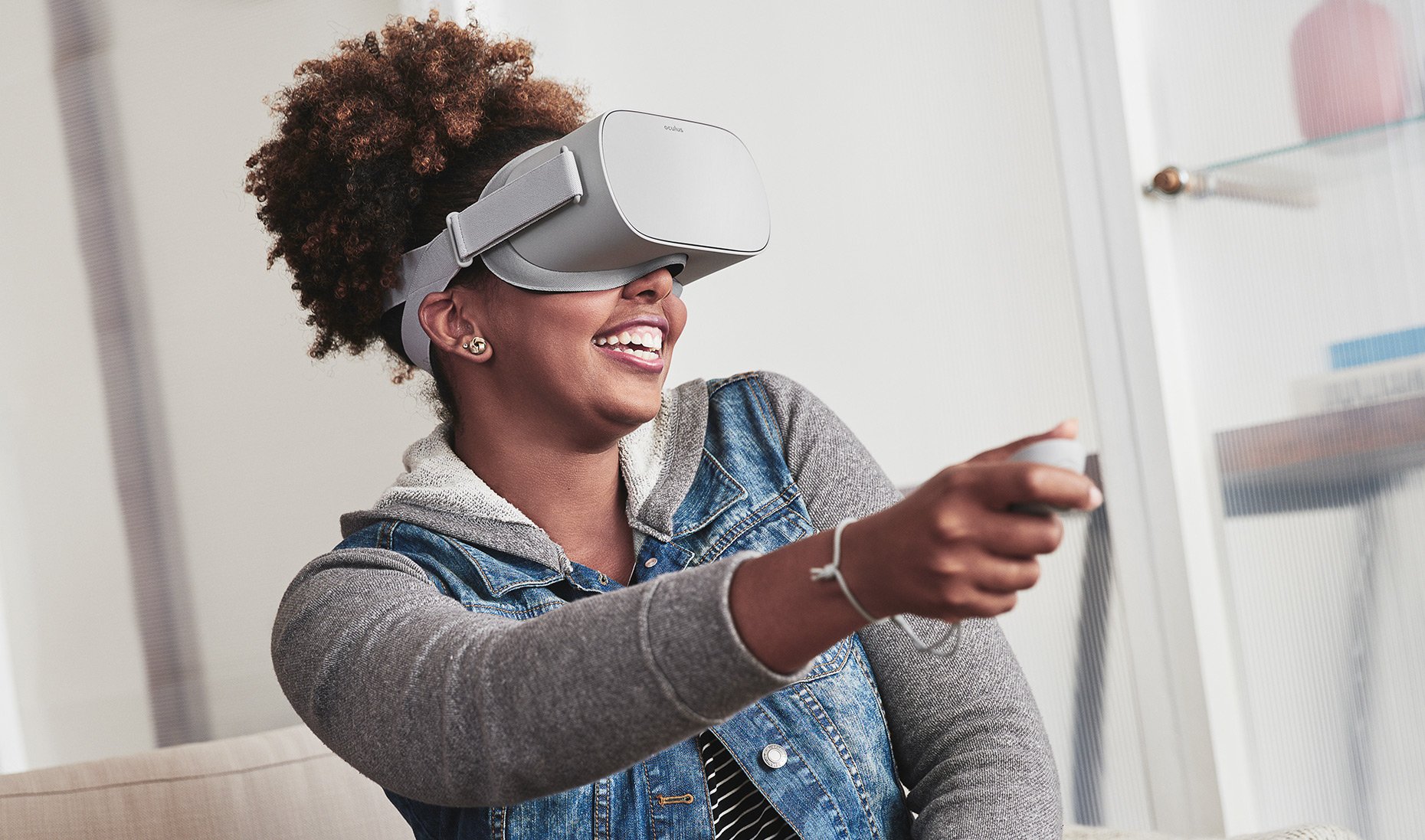 All of the apps and games you install on the Oculus Go come from the Oculus Store, a separate store managed by Oculus. It has its own payment system and its own update system, which you manage through the Oculus app on your phone. While the Oculus Go headset does in fact run Android underneath, the Oculus App is available for Android and iOS users alike.
Thee Oculus Store gives you access to over 1,000 VR experiences, ranging from action games to emotional stories and so many puzzles for you to explore. You will also find a healthy Educational section in the store alongside a huge selection of movies you can purchase directly from Oculus and enjoy in your very own virtual theater.
Check out the list of Oculus Go experiences for more information
Who is Oculus Go for?
Well, basically everyone! Oculus has worked hard to make sure this headset fits as many different people as possible, and is small enough to take with you everywhere. In a way, it's the game console you wear on your face. While there's no shortage of violent shooters and games meant to jump scare you out of your shirt, there's also some great racing and puzzle experiences as well.
The only real limitation, according to Oculus, is the age restriction. According to the Health and Safety information, no one under the age of 13 should use Oculus Go. This is a similar warning to what we've seen on other VR headsets, and it comes from a concern regarding eye development in younger children. We'e spoken to pediatricians and optical surgeons on the topic to learn more, and the general word of warning is to be careful letting your kids use the headset for longer than half an hour without taking a break, but that it's ok for them to try it out every once in a while.
Kids can use VR, we talked to the experts!
How is the battery life in Oculus Go?
According to Oculus, the Go headset is capable of 2.5 hours of constant gameplay. In our testing of the headset, we found that number to depend heavily on the kind of gaming you were doing and what the brightness level of the display inside the headset was set to. If you find yourself browsing the web and watching YouTube 360 videos with the brightness a little lower than average, our tests found the headset battery will last closer to 4.5 hours. If you're playing a visually intense game like Anshar Online with friends, the 2.5 hour claim from Oculus is just about right.
This doesn't include standby time, which is quite a bit longer. If you unplug the headset for travel, expect the battery to last several days between uses. Even of you use the headset for 20-30 minutes and set it aside, the battery will keep for quite a while. The same goes for watching movies in the headset, if you take a break in between viewings you'll find you can just about watch two whole movies with the brightness down a little.
But the real secret to getting the Oculus Go to last for more than 2-3 hours is to have a backup battery nearby you can use while you are inside the headset. Depending on the capacity battery you choose, these backups can recharge the headset multiple times before it needs to be charged, and can deliver enough power to charge the headset even while you are playing the more visually intense games.
Take a look at the best Battery Backups for Oculus Go!
How much does Oculus Go cost?
All of the apps and games you install on the Oculus Go come from the Oculus Store, a separate store managed by Oculus. It has its own payment system and its own update system, which you manage through the Oculus app on your phone. While the Oculus Go headset does in fact run Android underneath, the Oculus App is available for Android and iOS users alike.
Thee Oculus Store gives you access to over 1,000 VR experiences, ranging from action games to emotional stories and so many puzzles for you to explore. You will also find a healthy Educational section in the store alongside a huge selection of movies you can purchase directly from Oculus and enjoy in your very own virtual theater.
Check out the list of Oculus Go experiences for more information
Who is Oculus Go for?
Well, basically everyone! Oculus has worked hard to make sure this headset fits as many different people as possible, and is small enough to take with you everywhere. In a way, it's the game console you wear on your face. While there's no shortage of violent shooters and games meant to jump scare you out of your shirt, there's also some great racing and puzzle experiences as well.
The only real limitation, according to Oculus, is the age restriction. According to the Health and Safety information, no one under the age of 13 should use Oculus Go. This is a similar warning to what we've seen on other VR headsets, and it comes from a concern regarding eye development in younger children. We'e spoken to pediatricians and optical surgeons on the topic to learn more, and the general word of warning is to be careful letting your kids use the headset for longer than half an hour without taking a break, but that it's ok for them to try it out every once in a while.
Kids can use VR, we talked to the experts!
How is the battery life in Oculus Go?
According to Oculus, the Go headset is capable of 2.5 hours of constant gameplay. In our testing of the headset, we found that number to depend heavily on the kind of gaming you were doing and what the brightness level of the display inside the headset was set to. If you find yourself browsing the web and watching YouTube 360 videos with the brightness a little lower than average, our tests found the headset battery will last closer to 4.5 hours. If you're playing a visually intense game like Anshar Online with friends, the 2.5 hour claim from Oculus is just about right.
This doesn't include standby time, which is quite a bit longer. If you unplug the headset for travel, expect the battery to last several days between uses. Even of you use the headset for 20-30 minutes and set it aside, the battery will keep for quite a while. The same goes for watching movies in the headset, if you take a break in between viewings you'll find you can just about watch two whole movies with the brightness down a little.
But the real secret to getting the Oculus Go to last for more than 2-3 hours is to have a backup battery nearby you can use while you are inside the headset. Depending on the capacity battery you choose, these backups can recharge the headset multiple times before it needs to be charged, and can deliver enough power to charge the headset even while you are playing the more visually intense games.
Take a look at the best Battery Backups for Oculus Go!
How much does Oculus Go cost?
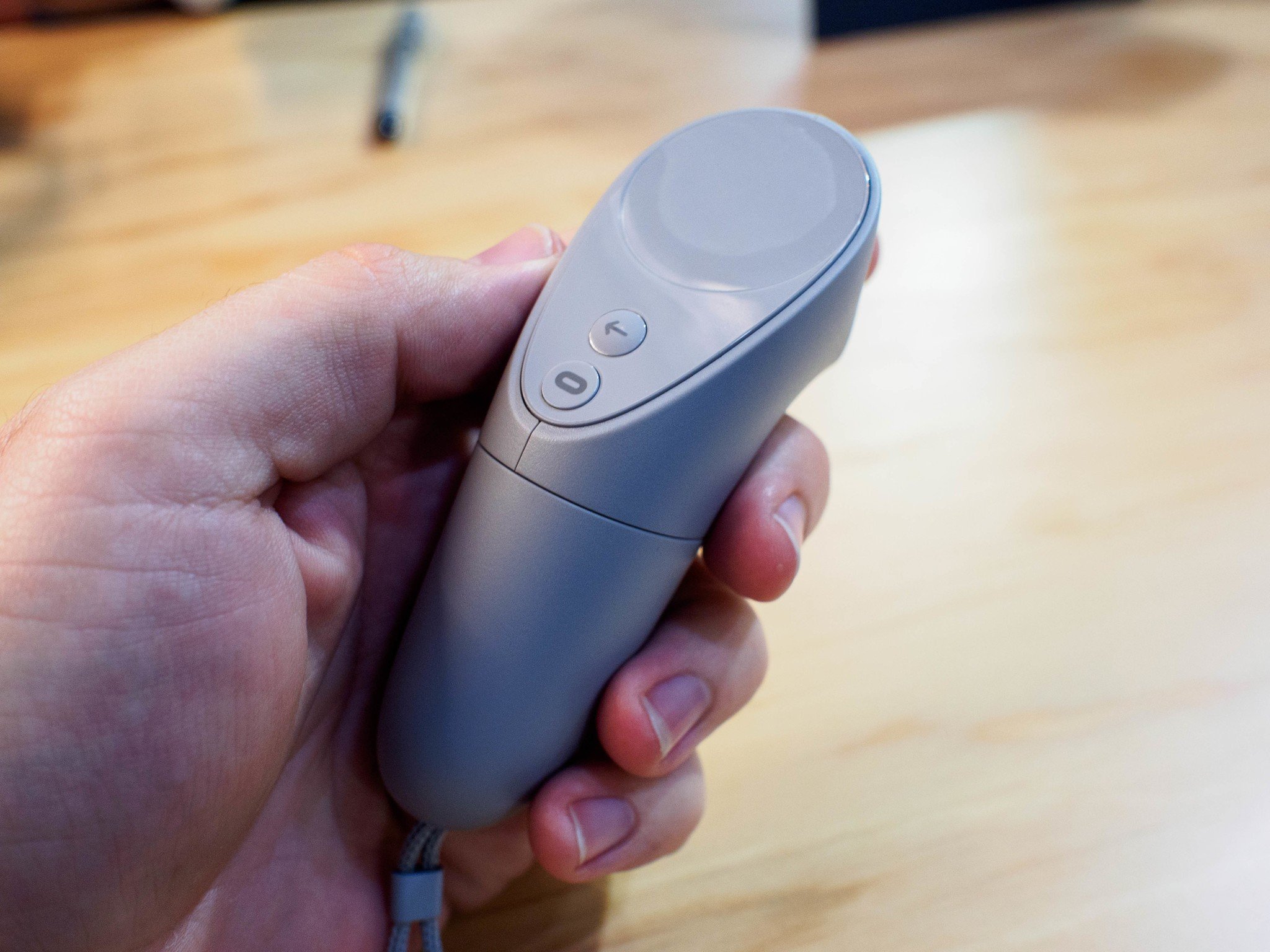 You can pick up this standalone headset now for a tidy sum of $199 for the 32GB model and $249 for the 64GB model. Considering a Samsung Gear VR alone costs $129.99 and requires a top of the line smartphone, this is pretty exciting news!
I just got my headset. Now what?
You can pick up this standalone headset now for a tidy sum of $199 for the 32GB model and $249 for the 64GB model. Considering a Samsung Gear VR alone costs $129.99 and requires a top of the line smartphone, this is pretty exciting news!
I just got my headset. Now what?
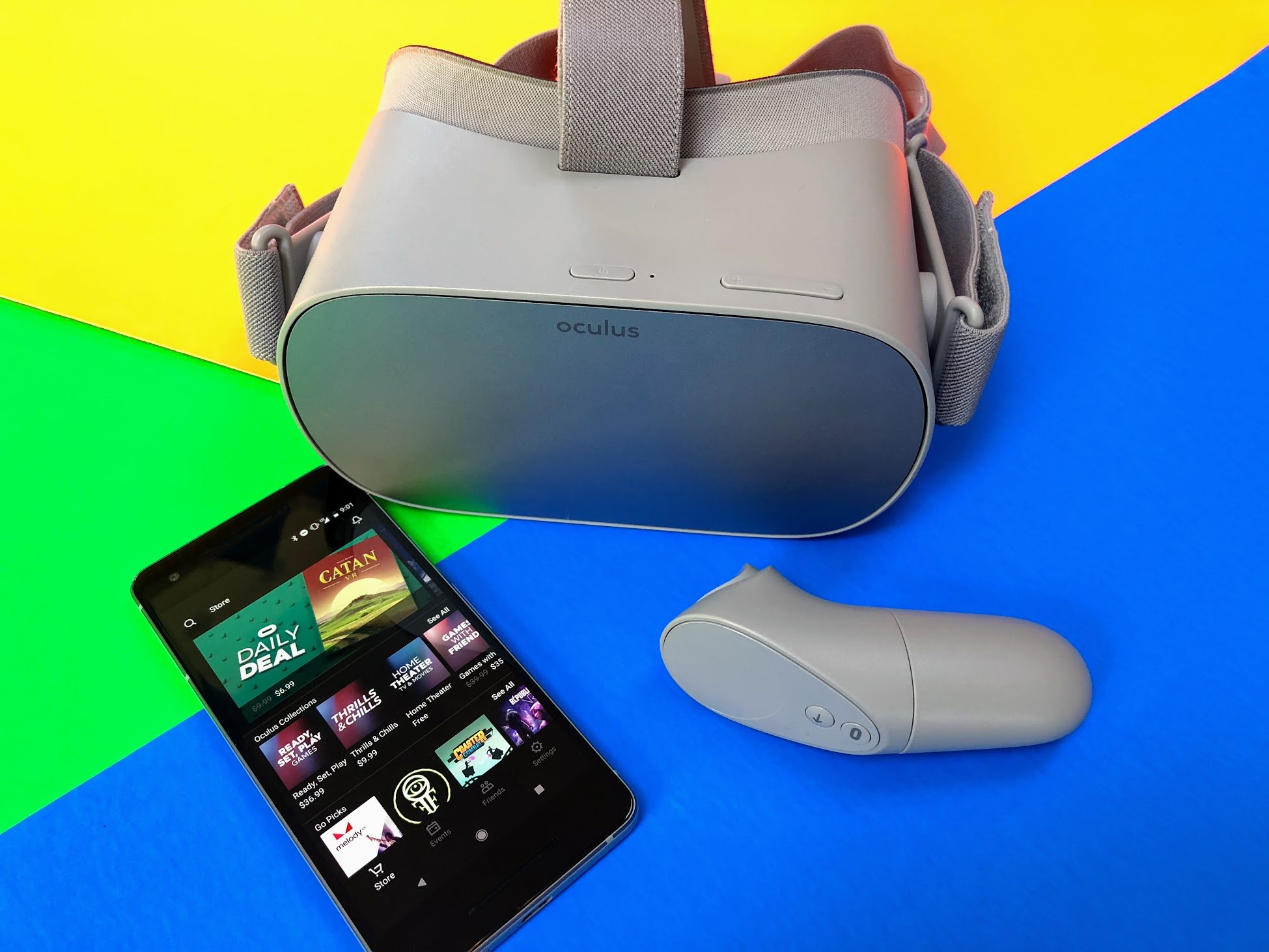 Before you go tearing open the box, there are a few things about setting this headset up you should know. This VR headset is a little different from the others, and while it doesn't need a phone to power the inside there's an app for Android an iPhone owners alike to make the experience worthwhile.
How to set up your Oculus Go: Android Edition
How to set up your Oculus Go: iPhone Edition
Before you go tearing open the box, there are a few things about setting this headset up you should know. This VR headset is a little different from the others, and while it doesn't need a phone to power the inside there's an app for Android an iPhone owners alike to make the experience worthwhile.
How to set up your Oculus Go: Android Edition
How to set up your Oculus Go: iPhone Edition
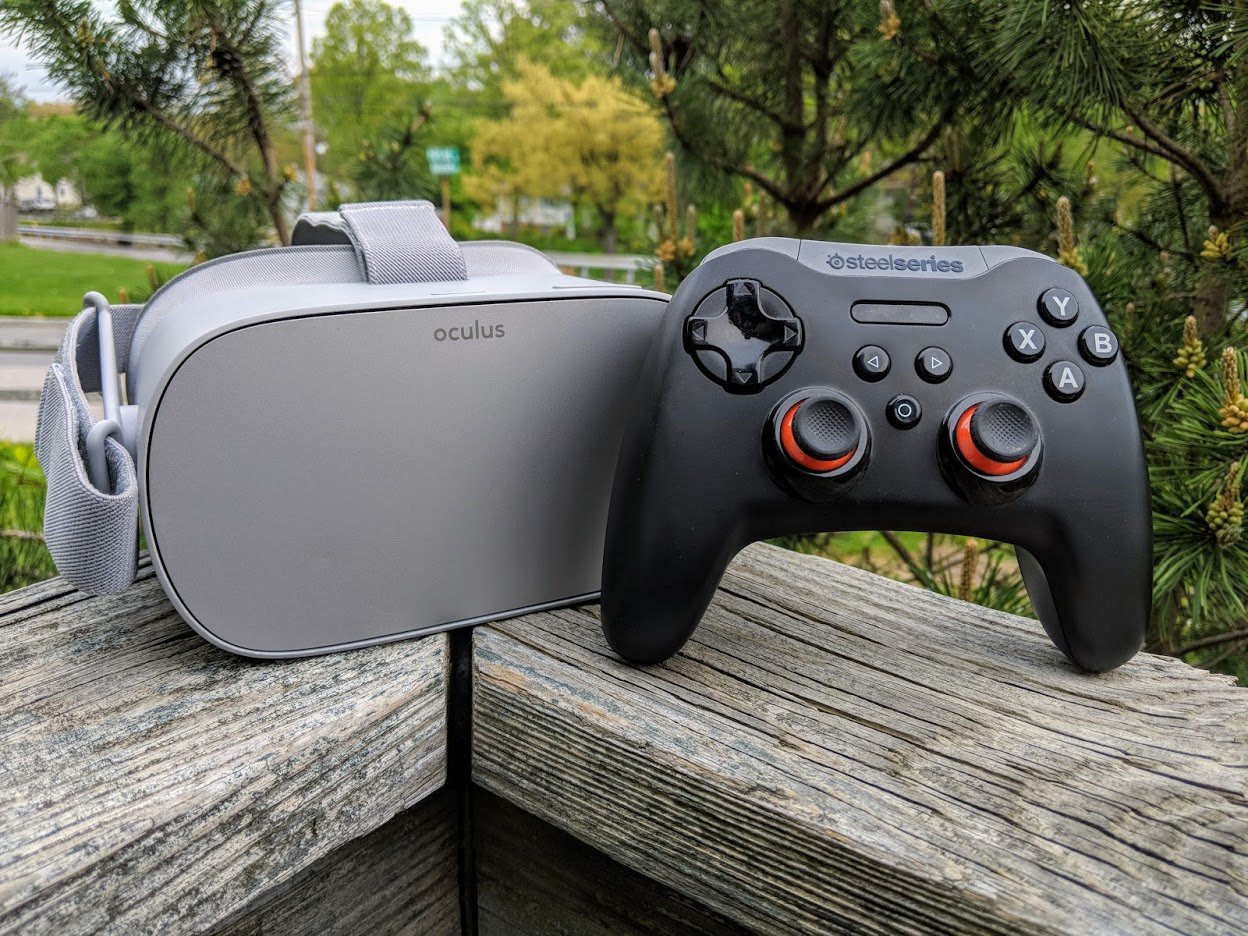 Once you get all set up and you're happy with the experience, you might want to add a gamepad to play all of the latest games available in the headset. Check out our tested batch of the best gamepads for Oculus Go to complete the experience!
The best gamepads we have tested with Oculus Go
Updated May 14, 2018: We've updated our guide with battery expectations and more!
Once you get all set up and you're happy with the experience, you might want to add a gamepad to play all of the latest games available in the headset. Check out our tested batch of the best gamepads for Oculus Go to complete the experience!
The best gamepads we have tested with Oculus Go
Updated May 14, 2018: We've updated our guide with battery expectations and more!
source: https://www.androidcentral.com/oculus-go
date: Mon, 14 May 2018 20:30:00 +0000
Comments
Post a Comment